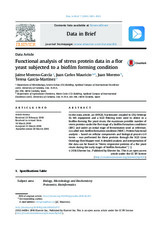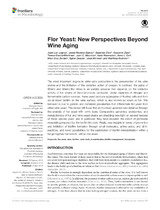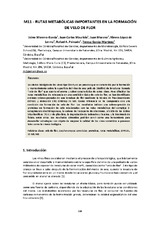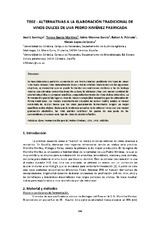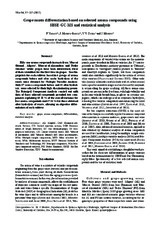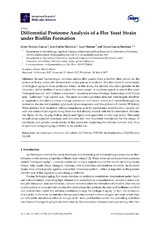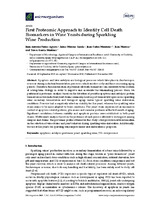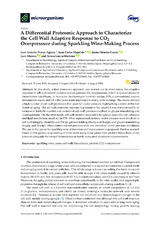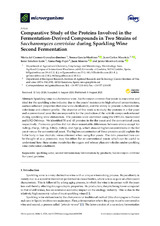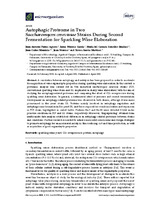Buscar
Mostrando ítems 1-10 de 19
Functional analysis of stress protein data in a flor yeast subjected to a biofilm forming condition
(Elsevier, 2016)
In this data article, an OFFGEL fractionator coupled to LTQ Orbitrap
XL MS equipment and a SGD filtering were used to detect in a
biofilm-forming flor yeast strain, the maximum possible number of
stress proteins under ...
Flor Yeast: New Perspectives Beyond Wine Aging
(Giuseppe Spano, 2016)
The most important dogma in white-wine production is the preservation of the wine
aroma and the limitation of the oxidative action of oxygen. In contrast, the aging of
Sherry and Sherry-like wines is an aerobic process ...
Rutas metabólicas importantes en la formación de velo de flor
(Universitat Rovira i Virgili, 2015)
La crianza biológica de los vinos tipo Sherry es un proceso que se caracteriza por la formación
y mantenimiento sobre la superficie del vino de una película (biofilm) de levaduras llamada
“velo de flor” que aporta el ...
Alternativas a la elaboración artesanal de vinos dulces de uva Pedro Ximénez pasificada
(Universitat Rovira i Virgili, 2015)
Se han elaborado a partir de un mosto de uva Pedro Ximénez pasificada tres tipos de vinos:
Vino Dulce natural, Vino Naturalmente Dulce y Pedro Ximénez tradicional, con los siguientes
objetivos, a) demostrar que se puede ...
Grape musts differentiation based on selected aroma compounds using SBSE-GC-MS and statistical analysis
(Institute of Grapevine Breeding Geilweilerhof, 2015)
Fifty-one aroma compounds in musts from 'Muscat
Ottonel', 'Aligoté', 'Muscat of Alexandria' and 'Pedro
Ximénez' white grapes have been determined, three
of them identified for the first time in grapes. Two fingerprints
for ...
Differential Proteome Analysis of a Flor Yeast Strain under Biofilm Formation
(MDPI, 2017)
Several Saccharomyces cerevisiae strains (flor yeasts) form a biofilm (flor velum) on the
surface of Sherry wines after fermentation, when glucose is depleted. This flor velum is fundamental
to biological aging of these ...
First Proteomic Approach to Identify Cell Death Biomarkers in Wine Yeasts during Sparkling Wine Production
(MDPI, 2019)
Apoptosis and later autolysis are biological processes which take place in Saccharomyces cerevisiae during industrial fermentation processes, which involve costly and time-consuming aging periods. Therefore, the identification ...
A Differential Proteomic Approach to Characterize the Cell Wall Adaptive Response to CO2 Overpressure during Sparkling Wine-Making Process
(MDPI, 2020)
In this study, a first proteomic approach was carried out to characterize the adaptive response of cell wall-related proteins to endogenous CO2 overpressure, which is typical of second fermentation conditions, in two wine ...
Comparative Study of the Proteins Involved in the Fermentation-Derived Compounds in Two Strains of Saccharomyces cerevisiae during Sparkling Wine Second Fermentation
(MDPI, 2020)
Sparkling wine is a distinctive wine. Saccharomyces cerevisiae flor yeasts is innovative and ideal for the sparkling wine industry due to the yeasts’ resistance to high ethanol concentrations, surface adhesion properties ...
Autophagic Proteome in Two Saccharomyces cerevisiae Strains During Second Fermentation for Sparkling Wine Elaboration
(MDPI, 2020)
A correlation between autophagy and autolysis has been proposed in order to accelerate the acquisition of wine organoleptic properties during sparkling wine elaboration. In this context, a proteomic analysis was carried ...

